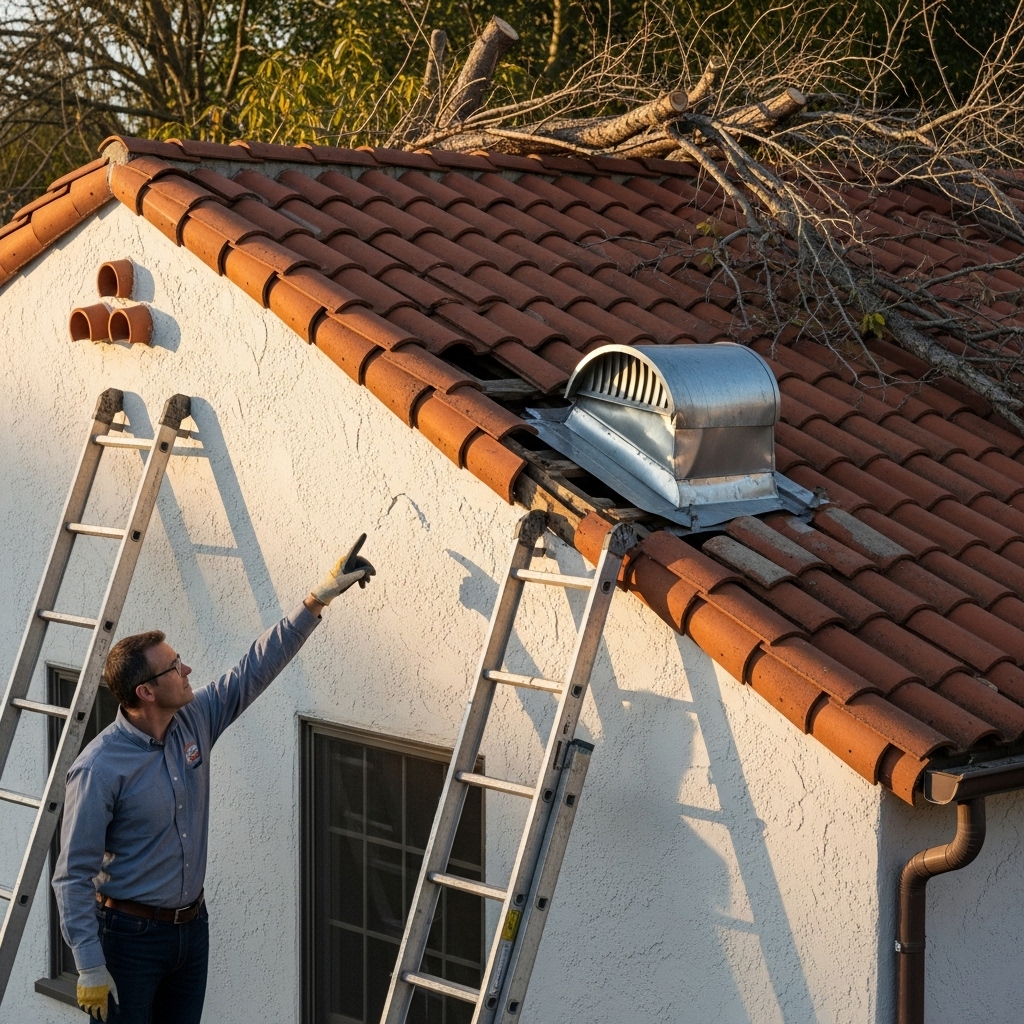Los Angeles homes are full of character, but their charm often comes with vulnerabilities that rodents are quick to discover. Between classic bungalows with generous roof overhangs, hillside homes with exposed understructures, and renovated properties with a mix of old and new materials, there are dozens of places where small gaps become highways for unwanted guests. As a local who has spent countless hours in attics, crawl spaces, and on roofs from the Westside to the San Gabriel Valley, I have seen the same patterns appear again and again. Understanding those patterns—and addressing them through deliberate rodent proofing—is the difference between a quiet home and one that keeps you up at night chasing sounds you cannot quite place.
Let us start at the top. Rooflines in Los Angeles are endlessly varied, and each style creates unique challenges. Tile roofs, so popular in Mediterranean and Spanish-style homes, often hide gaps at the eaves and along ridges. Rodents learn to slip under the tiles where ventilation channels and warmth make for tempting pathways. Asphalt shingle roofs tend to have cleaner edges, but time and heat can open gaps at flashing, pipe penetrations, and attic vents. Flat or low-slope roofs, common in mid-century modern or contemporary construction, introduce their own problems with parapets and scuppers that, if not screened or sealed, provide perfect entry.
Attic vents, soffits, and fascia details
One of the most frequent issues is degraded screening at gable, dormer, or roof vents. A single torn corner invites exploration, and once a rodent learns there is an opening, it returns until the breach widens. Soffit details, especially on older homes where wood meets stucco, can develop hairline separations as materials move with season and age. In neighborhoods with mature trees, branches overhanging the roof offer bridges that make these vulnerabilities even more attractive. Reinforcing those locations with durable, corrosion-resistant materials and ensuring tight fitment is essential.
Fascia boards and drip edges can also be weak points. When gutters are clogged and water overflows, wood fibers swell and soften, inviting gnawing. Heat waves followed by cooler nights create expansion and contraction cycles that subtly shift joints. Good proofing accounts for these seasonal rhythms, choosing seals and fasteners that adapt rather than crack.
Walls, utility penetrations, and garage interfaces
Moving down the envelope, the next set of problems typically appears around utility penetrations where electricians, plumbers, and low-voltage installers have necessarily pierced the building’s shell. Over years—and sometimes across multiple remodels—these penetrations multiply and are rarely sealed with pests in mind. Conduit stubs, abandoned lines, and hose bib cutouts create a dotted line of opportunity. On shared walls in duplexes or townhome complexes, this effect is magnified. Proofing means cataloging every one of these points, then closing them with compatible materials that do not shrink, crumble, or fall out when the house moves a little.
Garage doors deserve special attention. The slim gap at the bottom of a door with a tired seal is a classic entry point, especially when a garage houses pet food, laundry supplies, or storage boxes that make a cozy nest. Roll-up doors also introduce side gaps that widen with misalignment. Catching and correcting these small failures goes a long way toward keeping the adjoining interior spaces quiet and clean.
Attics, crawl spaces, and the hidden highways inside
Once inside, rodents rarely march across open rooms. They hug the edges and the shadows, exploiting the building’s inner architecture. Attics provide warmth and insulation material for nesting. Crawl spaces offer darkness, moisture, and direct paths to plumbing and HVAC chases. In hillside homes, where levels are staggered, the underside of the structure becomes a network that links entry points across the footprint. Proofing strategies that work take this three-dimensional reality seriously, closing off access between cavities so that even if something reaches one compartment, it cannot spread easily to another.
Another recurring problem is damage to insulation and ductwork. A single puncture in a flexible duct can undercut comfort in a bedroom and invite condensation where you least want it. Compromised insulation loses effectiveness, and the contaminants left behind introduce odors that seem to drift and intensify during hot afternoons. Cleaning, replacing, and restoring these elements is part of a complete solution, not an optional extra.
Landscaping, fences, and exterior habits
Outside the home, the yard and perimeter create their own set of challenges. Dense ivy climbing walls, stacked firewood, and debris tucked behind sheds turn into ladder rungs and cover for exploration. Fences that abut the house can bridge directly into eaves, and uneven soil settles beneath concrete pads, opening slim cavities below door thresholds. None of this means your garden needs to become stark or uninviting; it simply means that trimming, spacing, and mindful storage support the work done on the structure.
Sanitation habits also count. Pet food left out overnight, open compost, and overfilled recycling can create a scent map that leads straight to your door. Los Angeles heat accelerates these odors, and the rhythm of weekly collection sometimes leaves bins staged just where a scout would hope to find them. Adjusting a few routines—closing lids firmly, keeping containers a bit off walls, quickly sweeping spilled seed from patios—adds up.
Mid-project, homeowners often ask what sets professional rodent proofing apart from do-it-yourself attempts. The difference is a systematic survey, methodical sealing with materials that match the structure, and a clear order of operations: encourage exit, close the gaps, restore cleanliness, and verify. Skipping steps leads to recurring activity, and a series of small annoyances becomes a bigger headache.
Local weather patterns and seasonal stress
Our weather amplifies these issues. Heat waves encourage exploratory behavior at night when temperatures drop and interiors radiate warmth. Winter rains chase animals to higher, drier ground—your attic or the space above a garage. Wind events can dislodge lightweight screening or lift a shingle just enough to create a new path. Thinking seasonally helps you get ahead of these dynamics, with quick checkups after major weather to ensure no weaknesses have opened.
Myths that keep problems alive
Two myths persist. The first is that seeing nothing means nothing is wrong. In reality, rodents are experts at moving along hidden edges and leaving minimal surface evidence at first. The second is that a single trap or repellent solves the problem. Trapping has its place, but without exclusion and sanitation, it is like bailing water without patching the hole in the boat. True relief comes from sealing and restoring, so the incentives to return disappear.
Frequently asked questions
Why do problems keep returning after I patch a hole?
Patching the visible hole without addressing nearby gaps or the conditions that invited entry leaves pathways open. A systematic approach finds the cluster of vulnerabilities and closes them with materials that move with the home.
How do I know if my attic insulation has been compromised?
Signs include uneven coverage, matted or tunneled areas, and lingering odors. A professional assessment can confirm the extent of damage and recommend cleaning and restoration to bring performance back.
Do roof styles really make a difference?
Yes. Tile, shingle, and flat roofs each present different vulnerabilities. Tailoring the proofing method to your roof style and age is one key to long-lasting results.
Will proofing change the look of my home?
Quality work is discreet. Color-matched covers, low-profile screening, and careful sealing blend into existing architecture. Most homeowners notice improved quiet and cleanliness more than any visible change.
How often should I revisit proofing work?
At least once a year, and after significant weather or any renovation. Quick inspections catch minor shifts early so you can correct them before they turn into a problem.
If you are ready to close the common gaps, restore quiet, and protect the clean air inside your home, schedule professional rodent proofing with a local team that understands Los Angeles construction. With the right plan, the scratching stops, the air clears, and your home returns to being the comfortable retreat it was meant to be.

